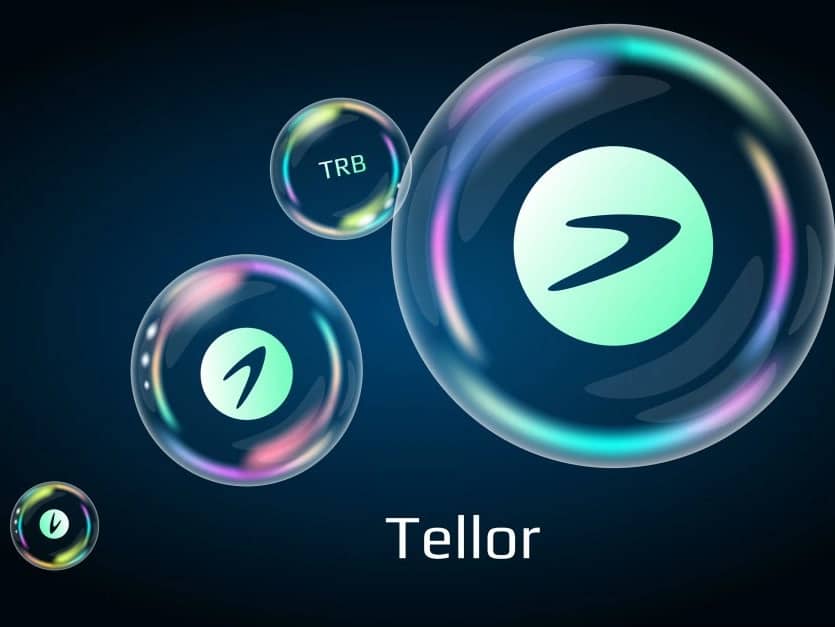위키 구독하기
Share wiki
Bookmark
Tellor
Tellor
Tellor는 이더리움(Ethereum) 네트워크 기반의 분산형 오라클입니다. Tellor 오라클 네트워크는 TRB 토큰으로 구동됩니다. Tellor는 작업 증명(proof-of-work) 및 지분 증명(proof-of-stake) 시스템을 결합한 스테이크드 작업 증명(staked proof of work) 방식을 사용하여 스마트 계약에 데이터를 간편하게 구현하는 솔루션을 제공합니다.
2020년 9월, Tellor v2가 메인넷에서 출시되었습니다. 10월에는 팀이 관리자 키를 제거하여 Tellor 프로토콜의 마지막 중앙 집중식 메커니즘을 없앴습니다. 2020년 11월, Tellor 팀은 매틱 네트워크(Matic Network)에 Tellor Too라는 낙관적 오라클을 배포했습니다.
배경
Tellor는 분산형 오라클로, 오프체인 데이터를 이더리움 블록체인으로 가져옵니다. PoW 시스템을 사용하여 성공적인 Tellor 데이터 포인트마다 토큰이 채굴됩니다. 회사는 그곳에서 10%의 지분을 가져갑니다.

Tellor 개발 아이디어는 회사 설립자인 Brenda Loya, Nicholas Fett 및 Michael Zemrose가 이전 스타트업인 Daxia에 분산형(decentralized) 오라클이 필요하다고 느꼈을 때 나왔습니다. Daxia를 사용하면서 중앙 집중식 오라클에 의존했는데, 이는 완전히 분산된 프로토콜을 만드는 그들의 야망에 맞지 않았습니다. 기존의 분산형 오라클이 없다는 것을 알게 된 후, 팀은 플랫폼에서 최초의 분산형 오라클을 만들기 시작했습니다. 그들은 한 기사에서 회사의 신념과 비전에 대해 다음과 같이 말했습니다.
우리는 혐오하는 암호화폐 생태계의 일부가 되고 싶지 않습니다. 우리는 Tellor에 대해 중앙 집중식 제품을 구매하거나 사용하지 않을 것입니다. 대부분의 팀이 소유한 토큰이든 영원히 소유자가 제어하는 작은 화이트리스트이든 말입니다.
기술
Tellor는 PoW 및 PoS 시스템의 하이브리드인 스테이크드 작업 증명(Staked Proof of Work) 프로토콜을 사용합니다. Tellor에서 채굴을 시작하려면 채굴자는 회사의 기본 코인인 TRB 1000개를 스테이킹해야 합니다. 이는 잠재적으로 '잘못된 데이터 포인트'를 제공할 수 있는 다른 채굴자의 악의적인 활동을 막기 위한 노력으로 시행되었습니다.
Tellor의 이더리움 기반 토큰은 자체 Initial Coin Offering (ICO)를 가진 적이 없습니다. ICO 대신 회사는 채굴 보상의 10%를 설립자 재무부에 배포하기로 선택했습니다. 이 결정에 대해 그들은 다음과 같이 설명했습니다.
개발자 지분을 통해 필요한 자금을 확보하여 지속적이고 안전한 오라클 네트워크를 구축할 수 있지만, 실제로 필요한 최첨단 제품을 제공해야만 가능합니다. 그렇지 않으면 토큰 가치가 폭락하고 채굴자이든 오라클을 사용하는 실제 프로젝트이든 Tellor에 대한 관심이 없어질 것입니다.
Tellor는 토큰 배포에 대해 일정 발행 방식을 따릅니다. 즉, 회사는 각 블록에서 고정된 양을 발행하고 전체 토큰 공급량이 매년 (고정된 비율로) 증가하여 '점차 감소하는 화폐 공급 증가율'을 만들어냅니다.
토큰 경제
Tellor Tributes (TRB)는 Tellor의 기본 토큰입니다. 기본 보상과 사용자 요청을 통한 팁을 통해 데이터 제공을 장려하는 데 사용됩니다. 분쟁을 통해 유효한 데이터를 관리하고 토큰 보유자가 제안하고 투표하는 시스템 업그레이드에 사용됩니다. TRB는 작업 증명(PoW) 채굴 프로세스를 통해 생성되며, 여기서 채굴자는 오라클에 정확한 데이터를 제공하기 위해 경쟁하고 기여에 대한 보상으로 TRB를 받습니다. Tellor 채굴자는 네트워크를 채굴하기 위해 추가로 1000 TRB를 스테이킹해야 합니다.
Tellor에는 초기 코인 제공이 없었고, 사전 채굴도 없었으며, 모든 토큰은 네트워크에 적극적으로 참여하는 채굴자에 의해 생성됩니다. TRB에는 고정된 공급량이 없으며, 총 공급량은 성공적인 쿼리에 대해 채굴자에게 지급되는 기본 보상의 함수로 증가합니다.
2020년 9월, Tellor v2가 출시되어 Tellor 프로토콜에 토큰 수수료 소각이 추가되었습니다.
Tellor v2
2020년 9월, Tellor v2가 메인넷에서 출시되었습니다. 다음은 Tellor의 원래 버전에 적용된 개선 사항 목록입니다.
확장성
- 블록당 추가되는 데이터 포인트 수 증가: Tellor의 이전 시스템에서는 10분마다 가장 높은 지불금을 받는 요청을 채굴할 수 있었습니다. Tellor V2 버전에서는 가장 높은 지불금을 받는 값만 보고하는 대신 지불금 금액 순으로 상위 5개 요청의 배열입니다. 요청 ID와 해당 값을 수락하는 대신 상위 5개 요청 ID가 포함된 배열 하나와 해당 가격이 포함된 다른 배열 하나를 수락합니다.
- 속도 향상 (10분 난이도 목표 감소): Tellor V2에서 팀은 값이 블록체인에 추가되는 속도를 높였습니다. 이 속도는 채굴 난이도 목표를 설정하여 제어되며, 10분에서 5분으로 변경되었습니다.
잘못된 내용이 있나요?
